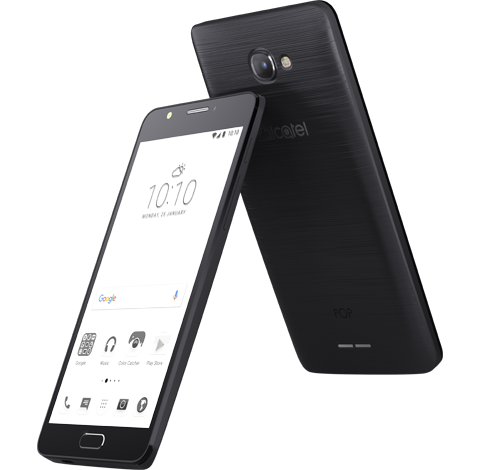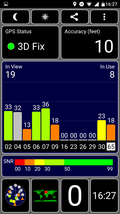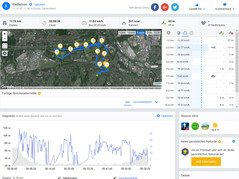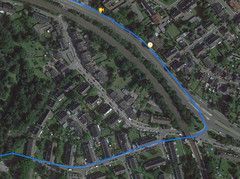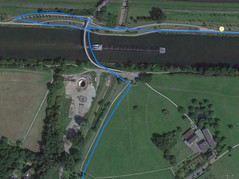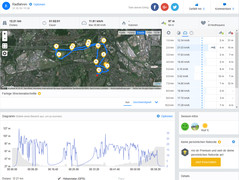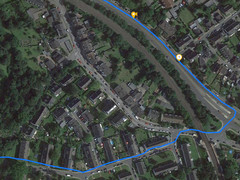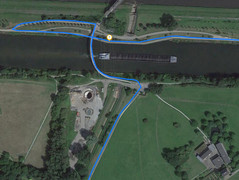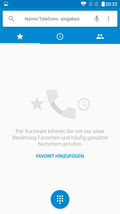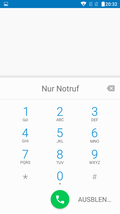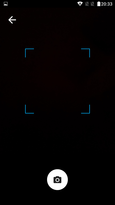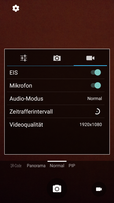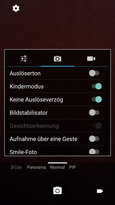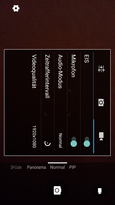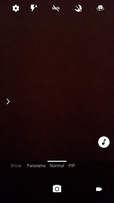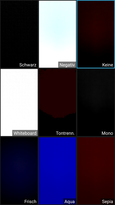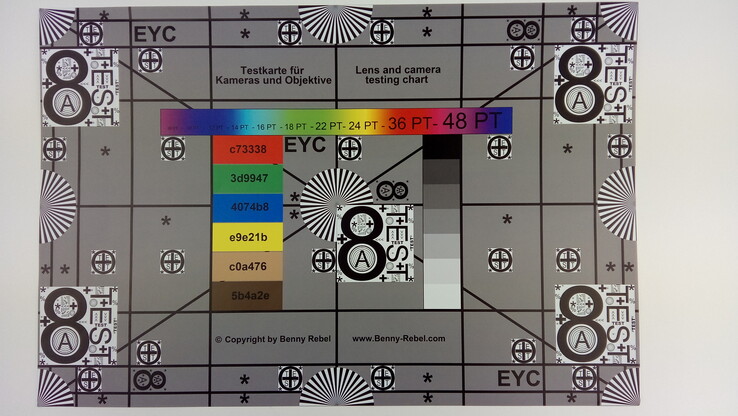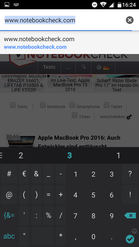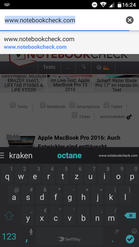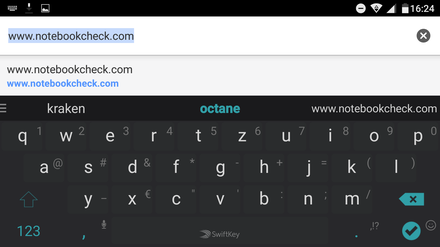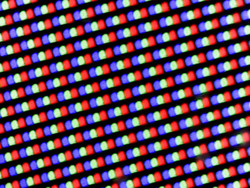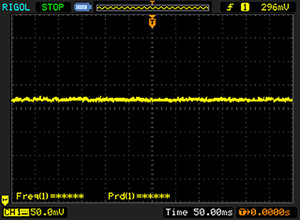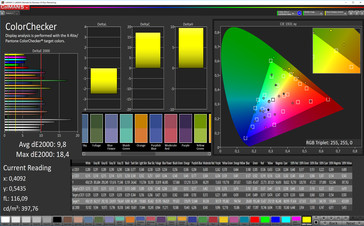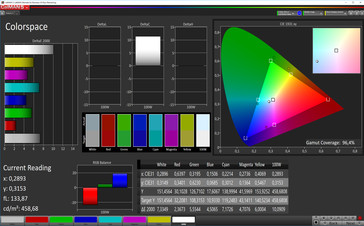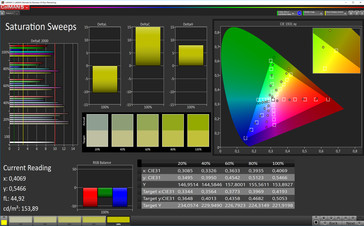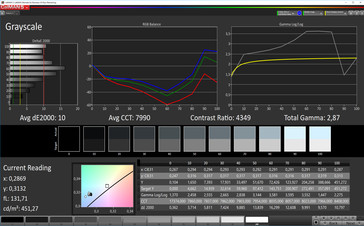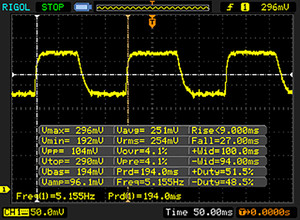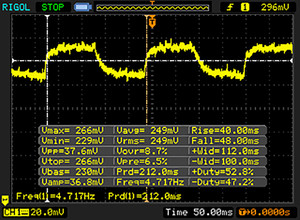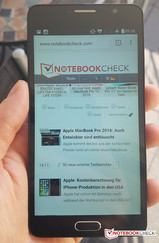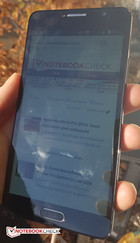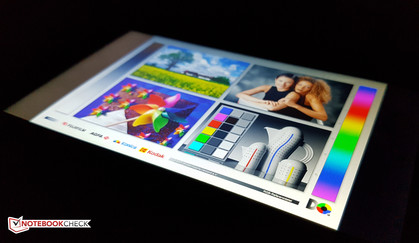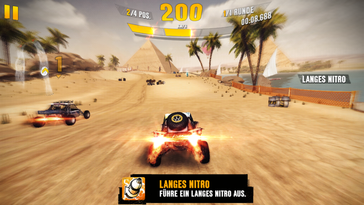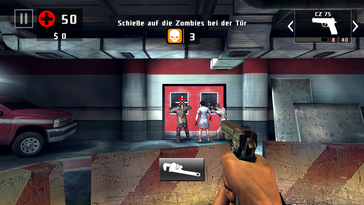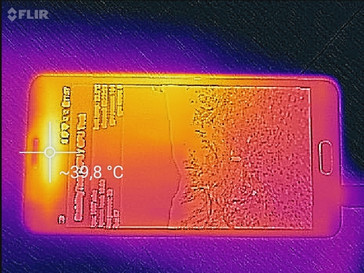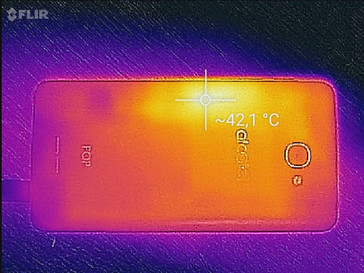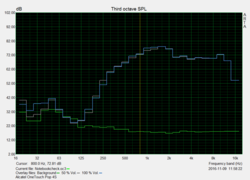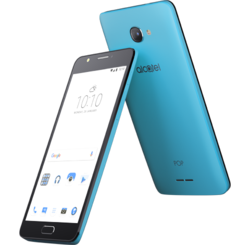Alcatel One Touch Pop 4S Smartphone Review
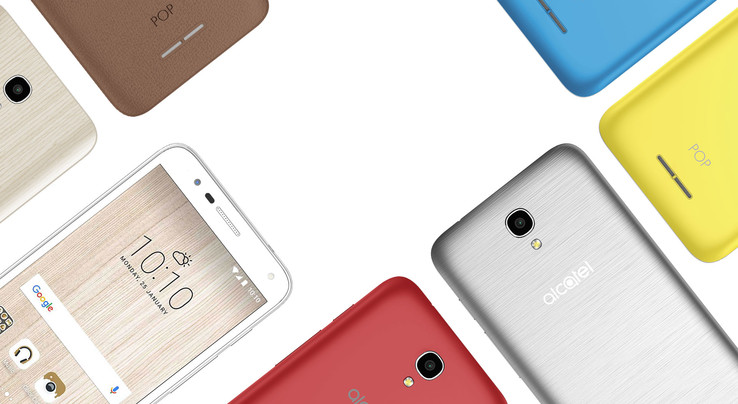
For the original German review, see here.
The Chinese manufacturer TCL introduced its new product lineup, situated in the entry-level to medium price range, at this year's Mobile Work Congress 2016 in Barcelona. Alcatel's One Touch Pop 4 series includes three handsets, the Pop 4S as the premium model of the trio.
The technical configuration is also mostly on par with other devices in this price range: MediaTek's octa-core SoC, 5.5-inch IPS panel with a resolution of 1929x1080 pixels, 13 MP primary camera, 2 GB of RAM, and an expandable 16 GB of internal storage. However, special focus has been placed on the sound of the dual-SIM handset. The speaker system installed in Alcatel's One Touch Pop 4S comes from JBL and promises a decent sound with an output of 3.6 watts.
The Chinese manufacturer TCL has set a recommended price of around 200 Euros (~$212) for its Pop 4S premium model. Therefore, the affordable mid-range handset finds itself in a highly competitive smartphone sector and the list of rivals is correspondingly long. We use the comparison rates of the UMi Super (Euro edition), the Lenovo Moto G4 Play, the ZTE Blade V7, the UMi Max, the Honor 5C, the Vernee Mars, and the Acer Liquid Zest Plus for this report.
Case
The plastic casing of Alcatel's One Touch Pop 4S is available in five colors including black, red, and green. The buyer can choose either a white or black front. With external dimensions of 152 x 77 millimeters (~6 x 3in) and an average screen-surface ratio of 71.3 percent, the Pop 4S is not one of the most compact devices on the market.
The volume and power controls on the casing's right are well made and hardly wobble. The pressure points are also well defined. However, we did not like their positioning that much. The power button is difficult to reach even for big hands. The physical home button below the screen juts out slightly, and unlike the other buttons, its pressure point is quite spongy.
The casing stability makes an overall good impression, although the plastic reduces the quality feel to some extent. Furthermore, the handset sometimes makes very audible cracking noises as soon as it is picked up. The battery cannot be removed despite the removable back cover.
Connectivity
The internal eMMC storage that can be expanded via a microSD card (max. 64 GB) has a rest capacity of approximately 10.4 GB (ROM) after deducting the operating system. The microSD can be incorporated into the internal storage via formatting, and compatible apps can be moved to the memory card (App2SD).
The 2960 mAh battery is recharged via the micro-USB port on the smartphone's lower edge. Peripherals, such as USB flash drives or external keyboards, can also be connected to it via an OTG adapter (on-the-go). Wi-Fi Direct and Miracast are present for wireless transmission of image contents. Furthermore, a fingerprint scanner and FM radio are installed.
Software
Alcatel's One Touch Pop 4S comes with Android 6.0 Marshmallow with the security patch from May 2016. It has not yet been stated whether it will be updated to Android 7.0 Nougat. Compared with Vanilla Android, the looks of the manufacturer's user interface have been modified only slightly. Also, hardly any bloatware has been installed.
Communication and GPS
The One Touch Pop 4S has Bluetooth version 4.2 and an NFC chip (near-field communication) for wireless communication. In addition, the Wi-Fi standards 802.11 b/g/n are present.
The reception quality of the integrated Wi-Fi module is average - the attenuation directly beside the router (Telekom Speedport W921V) is -40 dBm. The average transmission rates to the reference router at a distance of one meter (~3ft) is on a good level for the price range with 94 MBit/s (transmit) and 93 MBit/s (receive).
Alcatel's One Touch Pop 4S uses LTE Cat.6 (300 MBit/s downstream, 50 MBit/s upstream) for connecting to the mobile Internet. All LTE bands important for Germany are thus supported. The dual-SIM smartphone has two slots for a nano-SIM and a micro-SIM card. Neither SIM card slot throttles to GSM speeds.
| Networking | |
| iperf3 transmit AX12 | |
| UMI Max | |
| Alcatel One Touch Pop 4S | |
| iperf3 receive AX12 | |
| UMI Max | |
| Alcatel One Touch Pop 4S | |
| iperf Server (receive) TCP 1 m | |
| Lenovo Moto Z | |
| UMI Super Euro Edition | |
| Vernee Mars | |
| Honor 5C | |
| Acer Liquid Zest Plus | |
| Lenovo Moto G4 Play | |
| iperf Client (transmit) TCP 1 m | |
| Lenovo Moto Z | |
| UMI Super Euro Edition | |
| Honor 5C | |
| Acer Liquid Zest Plus | |
| Lenovo Moto G4 Play | |
| Vernee Mars | |
A bit of patience is needed for outdoor tracking. Although the integrated GPS module finds the current position reliably, it is anything but fast. Its accuracy is approximately 4 meters (~13 ft). Alcatel's One Touch Pop 4S does not do a particularly good job in terms of our practical test where we record a route using both the GPS module in the mid-range smartphone and Garmin's Edge 500 GPS bike computer. It presents a high deviation of 470 meters (~0.3 mi) over the total route.
Telephone and Call Quality
In our opinion, both the intelligibility and maximum volume were satisfactory in our test calls using the Vodafone network. The earpiece transmits voices with only little distortion and is mostly clear. Our contact also described the quality of the installed microphone as quite clear.
The phone app largely corresponds to Google's standard phone app in Android 6 design.
Cameras
The handset's rear-facing 13-MP primary camera has a resolution of 4224x3136 pixels in the 4:3 aspect ratio. The camera has an aperture of f/2.0 and a phase-detection autofocus that focuses within 0.3 seconds, according to the manufacturer.
The photo quality is at a good level for a device from this price range. However, the photos often suffer from a moderate image sharpness and colors look rather pale. When the light conditions worsen, the camera module produces a lot of distortions and image noise. Both are very common in this price range.
The 84.4 ° wide-angle front-facing camera has a resolution of 8 MP. Unlike most smartphones, Alcatel's One Touch Pop 4S has an LED flash on the front. Dark photo scenes benefit greatly from this additional light source, but image noise is nevertheless present. The camera module produces good quality photos in good light conditions. However, they sometimes display a visible bluish tint.
Videos can be recorded at up to 1080p at 30 FPS. The recording quality decreases to 720p at 30 FPS when using the front-facing 8-MP camera.
Accessories and Warranty
A modular, 5-watt charger (5V, 1A), USB cable, headset, and the usual brochures are included.
According to the warranty card, the manufacturer includes a 12-month warranty from the date of purchase. In addition to the manufacturer's warranty, a 24-month warranty http://www.notebookcheck.com/FAQ-Garantie-Gewaehrleistung-Rueckgaberecht.89911.0.htmlalso applies to the product as long as damage has not been caused by the end-user. Please see our Guarantees, Return Policies & Warranties FAQ for country-specific information.
Input Devices and Handling
The capacitive 5-finger multi-touchscreen responds quickly and reliably up into the peripheral areas. Furthermore, the glass surface has good gliding properties.
The smartphone is controlled via two touch-sensitive buttons below the screen and a physical home button in Samsung style. An integrated fingerprint scanner in the home button is active when the device is on standby. However, the detection speed is not particularly good, and the finger often has to be placed on the sensor again before it is identified.
Alcatel's One Touch Pop 4S uses the onscreen keyboard by the third-party supplier SwiftKey for text inputting.
Display
The IPS panel has a diagonal of approximately 14 centimeters (5.5 inches), and a Full HD resolution (1920x1080 pixels), which results in a pixel density of roughly 401 PPI. This is more than sufficient for everyday use.
The LCD screen achieves a maximum brightness of 460 cd/m² in our brightness measurements. In conjunction with the very good black level of 0.1 cd/m², the handset offers a contrast ratio of 4450:1. We measure a brightness of just 207 cd/m² in our measurement using equally distributed bright and dark areas (APL50) - a very low rate. This quickly exhausts the maximum brightness in everyday use. Furthermore, the contrast ratio drops to 2070:1 at a stable black level of 0.1 cd/m².
| |||||||||||||||||||||||||
Brightness Distribution: 84 %
Center on Battery: 445 cd/m²
Contrast: 4450:1 (Black: 0.1 cd/m²)
ΔE ColorChecker Calman: 9.8 | ∀{0.5-29.43 Ø4.78}
ΔE Greyscale Calman: 10 | ∀{0.09-98 Ø5}
Gamma: 2.87
CCT: 7990 K
| Alcatel One Touch Pop 4S IPS, 1920x1080, 5.5" | Vernee Mars IPS, 1920x1080, 5.5" | Honor 5C IPS, 1920x1080, 5.2" | ZTE Blade V7 IPS, 1920x1080, 5.2" | UMI Max IPS, 1920x1080, 5.5" | UMI Super Euro Edition IPS, 1920x1080, 5.5" | Acer Liquid Zest Plus IPS, 1280x720, 5.5" | Lenovo Moto G4 Play IPS, 1280x720, 5" | Lenovo Moto Z AMOLED, 2560x1440, 5.5" | |
|---|---|---|---|---|---|---|---|---|---|
| Screen | -5% | -40% | -45% | -9% | -13% | -32% | -34% | 43% | |
| Brightness middle (cd/m²) | 445 | 345 -22% | 515 16% | 409 -8% | 522 17% | 418 -6% | 414 -7% | 412 -7% | 485 9% |
| Brightness (cd/m²) | 424 | 339 -20% | 498 17% | 411 -3% | 498 17% | 410 -3% | 420 -1% | 414 -2% | 490 16% |
| Brightness Distribution (%) | 84 | 85 1% | 93 11% | 96 14% | 86 2% | 85 1% | 94 12% | 94 12% | 92 10% |
| Black Level * (cd/m²) | 0.1 | 0.14 -40% | 0.49 -390% | 0.38 -280% | 0.23 -130% | 0.31 -210% | 0.33 -230% | 0.42 -320% | |
| Contrast (:1) | 4450 | 2464 -45% | 1051 -76% | 1076 -76% | 2270 -49% | 1348 -70% | 1255 -72% | 981 -78% | |
| Colorchecker dE 2000 * | 9.8 | 7.1 28% | 6.2 37% | 9.4 4% | 6.9 30% | 4.4 55% | 8.1 17% | 5.6 43% | 2.1 79% |
| Colorchecker dE 2000 max. * | 18.4 | 13.9 24% | 11.4 38% | 17.6 4% | 12.3 33% | 6.5 65% | 13.8 25% | 9.7 47% | 5.5 70% |
| Greyscale dE 2000 * | 10 | 6.7 33% | 7.4 26% | 11.6 -16% | 9.2 8% | 3.6 64% | 9.6 4% | 6.9 31% | 2.6 74% |
| Gamma | 2.87 77% | 2.47 89% | 2.28 96% | 2.25 98% | 2.38 92% | 2.36 93% | 2 110% | 2.4 92% | 2.23 99% |
| CCT | 7990 81% | 7711 84% | 8664 75% | 9597 68% | 8687 75% | 6993 93% | 7754 84% | 8422 77% | 6843 95% |
| Color Space (Percent of AdobeRGB 1998) (%) | 88.14 | ||||||||
| Color Space (Percent of sRGB) (%) | 100 |
* ... smaller is better
Screen Flickering / PWM (Pulse-Width Modulation)
| Screen flickering / PWM not detected | |||
In comparison: 53 % of all tested devices do not use PWM to dim the display. If PWM was detected, an average of 8111 (minimum: 5 - maximum: 343500) Hz was measured. | |||
The average DeltaE shift of 9.8 (colors) and 10 (grayscale) to the sRGB color space is very high. The measured color temperature of 7990 Kelvin is also too cool, which leads to a slightly visible bluish tint in practice.
Display Response Times
| ↔ Response Time Black to White | ||
|---|---|---|
| 36 ms ... rise ↗ and fall ↘ combined | ↗ 9 ms rise | |
| ↘ 27 ms fall | ||
| The screen shows slow response rates in our tests and will be unsatisfactory for gamers. In comparison, all tested devices range from 0.1 (minimum) to 240 (maximum) ms. » 93 % of all devices are better. This means that the measured response time is worse than the average of all tested devices (20.2 ms). | ||
| ↔ Response Time 50% Grey to 80% Grey | ||
| 88 ms ... rise ↗ and fall ↘ combined | ↗ 40 ms rise | |
| ↘ 48 ms fall | ||
| The screen shows slow response rates in our tests and will be unsatisfactory for gamers. In comparison, all tested devices range from 0.165 (minimum) to 636 (maximum) ms. » 99 % of all devices are better. This means that the measured response time is worse than the average of all tested devices (31.6 ms). | ||
The outdoor legibility is quite limited due to the very low brightness in routine use - especially in direct sunlight. Alcatel's One Touch Pop 4S does a good job in terms of viewing angle stability: colors hardly invert and the reproduction barely changes in flat viewing angles thanks to the IPS panel. We did not observe any prominent clouding.
Performance
Alcatel's One Touch Pop 4S is powered by MediaTek's mid-range SoC (system on a chip) from 2015 that is supported by 2 GB of RAM. The MT6755 Helio P10 is built in the 28-nanometer process and has eight CPU cores based on the 64-bit capable Cortex A53 architecture.
The mid-range handset is mostly on par with the Helio P10 based comparison devices and the marginally stronger Honor 5C equipped with the company's own HiSilicon Kirin 650 in the synthetic GPU and processor benchmarks. The computing power is sufficient for routine use, but the subjective system performance and browser speed are worse than that of direct rivals.
The relatively long loading times when opening and closing apps reduce the work speed slightly, even when they have been cached. The flash memory's slow access times seem to have a negative impact on performance. The read and write speed measured from the internal eMMC storage is not particularly high with 144 MB/s (read) and just 12 MB/s (write). The same is true for the microSD slot's access time that we measured using our Toshiba Exceria Pro M401 reference card (max. 95 MB per second in read and max. 80 MB per second in write).
| AnTuTu v6 - Total Score (sort by value) | |
| Alcatel One Touch Pop 4S | |
| Vernee Mars | |
| Honor 5C | |
| ZTE Blade V7 | |
| UMI Max | |
| UMI Super Euro Edition | |
| Acer Liquid Zest Plus | |
| Lenovo Moto G4 Play | |
| Lenovo Moto Z | |
| Geekbench 3 | |
| 64 Bit Multi-Core Score (sort by value) | |
| Honor 5C | |
| ZTE Blade V7 | |
| Lenovo Moto Z | |
| 64 Bit Single-Core Score (sort by value) | |
| Honor 5C | |
| ZTE Blade V7 | |
| Lenovo Moto Z | |
| Geekbench 4.0 | |
| 64 Bit Single-Core Score (sort by value) | |
| Alcatel One Touch Pop 4S | |
| Vernee Mars | |
| UMI Max | |
| UMI Super Euro Edition | |
| Acer Liquid Zest Plus | |
| Lenovo Moto Z | |
| 64 Bit Multi-Core Score (sort by value) | |
| Alcatel One Touch Pop 4S | |
| Vernee Mars | |
| UMI Max | |
| UMI Super Euro Edition | |
| Acer Liquid Zest Plus | |
| Lenovo Moto Z | |
| GFXBench 3.0 | |
| on screen Manhattan Onscreen OGL (sort by value) | |
| Alcatel One Touch Pop 4S | |
| Vernee Mars | |
| Honor 5C | |
| ZTE Blade V7 | |
| UMI Max | |
| UMI Super Euro Edition | |
| Acer Liquid Zest Plus | |
| Lenovo Moto G4 Play | |
| Lenovo Moto Z | |
| 1920x1080 1080p Manhattan Offscreen (sort by value) | |
| Alcatel One Touch Pop 4S | |
| Vernee Mars | |
| Honor 5C | |
| ZTE Blade V7 | |
| UMI Max | |
| UMI Super Euro Edition | |
| Acer Liquid Zest Plus | |
| Lenovo Moto G4 Play | |
| Lenovo Moto Z | |
| GFXBench 3.1 | |
| on screen Manhattan ES 3.1 Onscreen (sort by value) | |
| Alcatel One Touch Pop 4S | |
| Vernee Mars | |
| Honor 5C | |
| ZTE Blade V7 | |
| UMI Max | |
| UMI Super Euro Edition | |
| Acer Liquid Zest Plus | |
| Lenovo Moto Z | |
| 1920x1080 Manhattan ES 3.1 Offscreen (sort by value) | |
| Alcatel One Touch Pop 4S | |
| Vernee Mars | |
| Honor 5C | |
| ZTE Blade V7 | |
| UMI Max | |
| UMI Super Euro Edition | |
| Acer Liquid Zest Plus | |
| Lenovo Moto Z | |
| GFXBench | |
| 1920x1080 Car Chase Offscreen (sort by value) | |
| Alcatel One Touch Pop 4S | |
| Vernee Mars | |
| Honor 5C | |
| UMI Max | |
| UMI Super Euro Edition | |
| Lenovo Moto Z | |
| on screen Car Chase Onscreen (sort by value) | |
| Alcatel One Touch Pop 4S | |
| Vernee Mars | |
| Honor 5C | |
| UMI Max | |
| UMI Super Euro Edition | |
| Lenovo Moto Z | |
| PCMark for Android - Work performance score (sort by value) | |
| Alcatel One Touch Pop 4S | |
| Vernee Mars | |
| Honor 5C | |
| ZTE Blade V7 | |
| UMI Max | |
| UMI Super Euro Edition | |
| Acer Liquid Zest Plus | |
| Lenovo Moto G4 Play | |
| Lenovo Moto Z | |
| Octane V2 - Total Score (sort by value) | |
| Alcatel One Touch Pop 4S | |
| Vernee Mars | |
| Honor 5C | |
| ZTE Blade V7 | |
| UMI Max | |
| UMI Super Euro Edition | |
| Acer Liquid Zest Plus | |
| Lenovo Moto G4 Play | |
| Lenovo Moto Z | |
| JetStream 1.1 - Total Score (sort by value) | |
| Alcatel One Touch Pop 4S | |
| Vernee Mars | |
| Honor 5C | |
| ZTE Blade V7 | |
| UMI Max | |
| UMI Super Euro Edition | |
| Acer Liquid Zest Plus | |
| Lenovo Moto G4 Play | |
| Lenovo Moto Z | |
| Mozilla Kraken 1.1 - Total (sort by value) | |
| Alcatel One Touch Pop 4S | |
| Vernee Mars | |
| Honor 5C | |
| ZTE Blade V7 | |
| UMI Max | |
| UMI Super Euro Edition | |
| Acer Liquid Zest Plus | |
| Lenovo Moto G4 Play | |
| Lenovo Moto Z | |
* ... smaller is better
Games
Up-to-date games such as "Dead Trigger 2" or "Asphalt Xtreme" do not push the Mali T860 MP2 integrated into the MT6755 Helio P10, to its limit. However, benchmark results of the graphics chip in Sony's Xperia XA sometime present frame rates of below 30 FPS. The integrated position sensors function impeccably and the touchscreen's accuracy is also beyond reproach.
Emissions
Temperature
The temperature development of Alcatel's One Touch Pop 4S is not an issue during everyday use. Although it warms up noticeably, it never gets unpleasantly hot. We measured a maximum idle temperature of 29.4 °C (~85 °F) on the back. The surface temperature climbed to 39.7 °C (~103 °F) in load conditions that we simulated with the Stability Test app (>1 hour).
(+) The maximum temperature on the upper side is 39.4 °C / 103 F, compared to the average of 35.2 °C / 95 F, ranging from 21.9 to 247 °C for the class Smartphone.
(+) The bottom heats up to a maximum of 39.7 °C / 103 F, compared to the average of 34 °C / 93 F
(+) In idle usage, the average temperature for the upper side is 26.8 °C / 80 F, compared to the device average of 32.9 °C / 91 F.
Speaker
The mono speaker is situated on the handset's back. It delivers a decent sound for the price range, but as expected, mids and trebles characterize its sound. As the Pink Noise analysis diagram illustrates, basses are virtually absent. Tones from the high-frequency range are reproduced differentiated well and are linear. At a maximum of 85 dB(A), the speaker is also loud enough. Static was not heard while playing music via the integrated speaker.
Alcatel One Touch Pop 4S audio analysis
(+) | speakers can play relatively loud (85.6 dB)
Bass 100 - 315 Hz
(-) | nearly no bass - on average 30.3% lower than median
(±) | linearity of bass is average (12.5% delta to prev. frequency)
Mids 400 - 2000 Hz
(±) | higher mids - on average 5.5% higher than median
(+) | mids are linear (4.9% delta to prev. frequency)
Highs 2 - 16 kHz
(+) | balanced highs - only 0.9% away from median
(+) | highs are linear (3.6% delta to prev. frequency)
Overall 100 - 16.000 Hz
(±) | linearity of overall sound is average (21% difference to median)
Compared to same class
» 38% of all tested devices in this class were better, 8% similar, 54% worse
» The best had a delta of 11%, average was 35%, worst was 134%
Compared to all devices tested
» 57% of all tested devices were better, 7% similar, 36% worse
» The best had a delta of 4%, average was 24%, worst was 134%
ZTE Blade V7 audio analysis
(+) | speakers can play relatively loud (85.3 dB)
Bass 100 - 315 Hz
(-) | nearly no bass - on average 46.6% lower than median
(+) | bass is linear (3% delta to prev. frequency)
Mids 400 - 2000 Hz
(±) | reduced mids - on average 11% lower than median
(±) | linearity of mids is average (12.1% delta to prev. frequency)
Highs 2 - 16 kHz
(+) | balanced highs - only 3% away from median
(+) | highs are linear (3.2% delta to prev. frequency)
Overall 100 - 16.000 Hz
(-) | overall sound is not linear (32.1% difference to median)
Compared to same class
» 82% of all tested devices in this class were better, 2% similar, 16% worse
» The best had a delta of 11%, average was 35%, worst was 134%
Compared to all devices tested
» 91% of all tested devices were better, 2% similar, 7% worse
» The best had a delta of 4%, average was 24%, worst was 134%
Honor 5C audio analysis
(+) | speakers can play relatively loud (87.9 dB)
Bass 100 - 315 Hz
(-) | nearly no bass - on average 30.9% lower than median
(±) | linearity of bass is average (8.1% delta to prev. frequency)
Mids 400 - 2000 Hz
(±) | higher mids - on average 7.1% higher than median
(±) | linearity of mids is average (8.8% delta to prev. frequency)
Highs 2 - 16 kHz
(±) | higher highs - on average 12.1% higher than median
(+) | highs are linear (2.9% delta to prev. frequency)
Overall 100 - 16.000 Hz
(-) | overall sound is not linear (31.7% difference to median)
Compared to same class
» 81% of all tested devices in this class were better, 2% similar, 16% worse
» The best had a delta of 11%, average was 35%, worst was 134%
Compared to all devices tested
» 90% of all tested devices were better, 2% similar, 8% worse
» The best had a delta of 4%, average was 24%, worst was 134%
Frequency diagram in comparison (checkboxes above can be turned on/off!)
Energy Management
Power Consumption
The maximum load power consumption of Alcatel's One Touch Pop 4S of 5.4 watts is roughly on par with its rivals. This is also true of the idle power consumption.
| Off / Standby | |
| Idle | |
| Load |
|
Key:
min: | |
| Alcatel One Touch Pop 4S 2960 mAh | Vernee Mars 3000 mAh | Honor 5C 3000 mAh | ZTE Blade V7 2540 mAh | UMI Max 4000 mAh | UMI Super Euro Edition 4000 mAh | Acer Liquid Zest Plus 5000 mAh | Lenovo Moto G4 Play 2800 mAh | |
|---|---|---|---|---|---|---|---|---|
| Power Consumption | -10% | -4% | 18% | 16% | -23% | 0% | 17% | |
| Idle Minimum * (Watt) | 0.93 | 1.02 -10% | 0.89 4% | 0.73 22% | 1.02 -10% | 0.84 10% | 0.83 11% | 0.68 27% |
| Idle Average * (Watt) | 1.41 | 1.69 -20% | 2.07 -47% | 0.92 35% | 1.53 -9% | 1.94 -38% | 2.06 -46% | 1.58 -12% |
| Idle Maximum * (Watt) | 2.36 | 1.82 23% | 2.15 9% | 0.93 61% | 1.62 31% | 2.07 12% | 2.08 12% | 1.61 32% |
| Load Average * (Watt) | 3.79 | 4.39 -16% | 3.46 9% | 4.47 -18% | 2.91 23% | 5.88 -55% | 3.53 7% | 3.36 11% |
| Load Maximum * (Watt) | 5.39 | 6.79 -26% | 5.18 4% | 5.96 -11% | 2.93 46% | 7.67 -42% | 4.49 17% | 3.91 27% |
* ... smaller is better
Battery Runtime
Alcatel's One Touch Pop 4S achieved a good battery life of 8 hours and 51 minutes in our Wi-Fi test using a screen brightness set to 150 cd/m². However, some rivals manage a longer runtime.
Our review sample needed about twice as long (3 hours) than the manufacturer states (100 minutes) to fully recharge a completely depleted battery.
| Alcatel One Touch Pop 4S 2960 mAh | Vernee Mars 3000 mAh | Honor 5C 3000 mAh | ZTE Blade V7 2540 mAh | UMI Max 4000 mAh | UMI Super Euro Edition 4000 mAh | Acer Liquid Zest Plus 5000 mAh | Lenovo Moto G4 Play 2800 mAh | |
|---|---|---|---|---|---|---|---|---|
| Battery runtime | ||||||||
| WiFi v1.3 (h) | 8.9 | 7.1 -20% | 9.7 9% | 8.7 -2% | 9.8 10% | 10.6 19% | 13.6 53% | 10.5 18% |
Pros
Cons
Verdict
Alcatel's One Touch Pop 4S is a nicely built, affordable mid-range device with decent configuration. We particularly liked the speaker that is one of the best in this price range. Overall, Alcatel's smartphone is not completely convincing due to shortcomings in everyday use.
Most physical controls are well made, but their positioning (power button) is awkward to use with one hand. The IPS panel features high-resolution, is also very bright and high-contrast - but only on a pure white background. The screen brightness is clearly lower in practice, making it sometimes necessary to use the LCD's maximum brightness indoors - its high-contrast is maintained, though. Although the performance of MediaTek's SoC is largely appealing in the benchmarks, its subjective system performance is not on par with the rivals. Unlocking the device via biometric fingerprint authentication could also be a nice feature, but the relatively poor identification rate of the fingerprint scanner in Alcatel's One Touch Pop 4S does not provide a real added value in everyday use.
Alcatel's One Touch Pop 4S is a solid mid-range smartphone that has not been thought out thoroughly in some respects.
Alcatel One Touch Pop 4S
- 12/05/2016 v5.1 (old)
Marcus Herbrich




